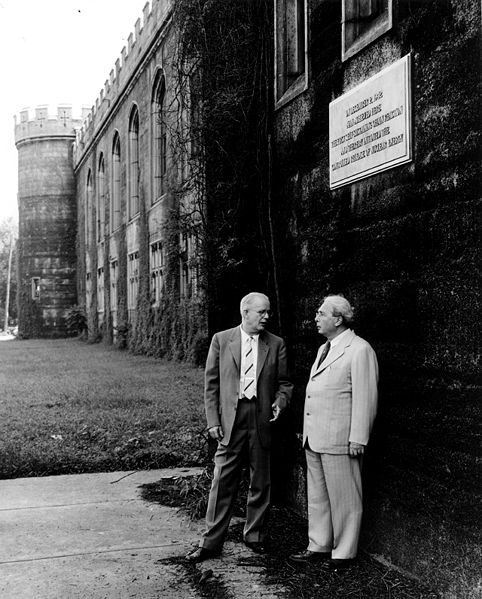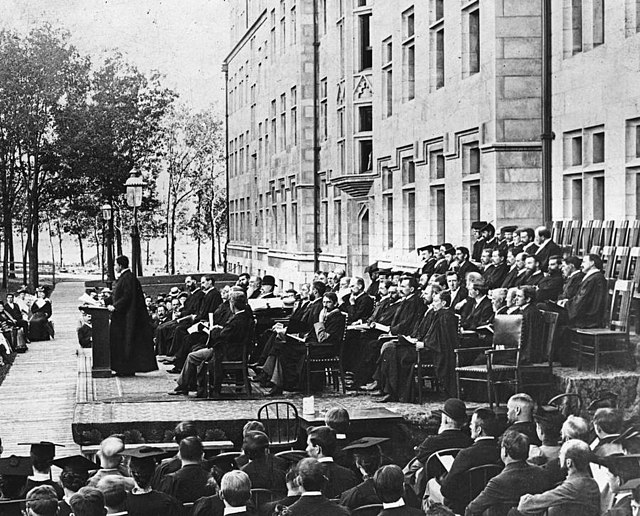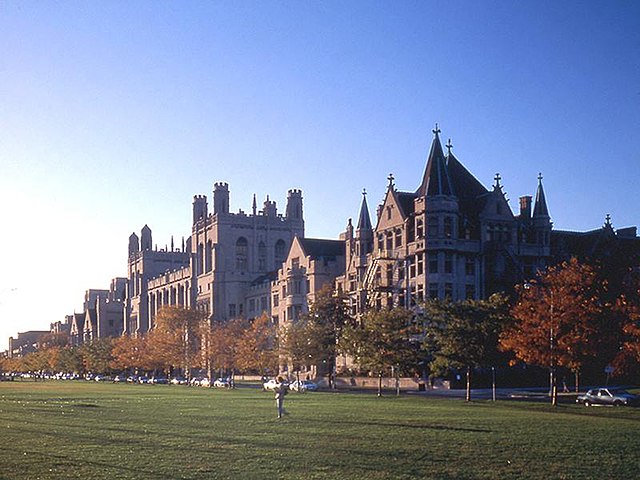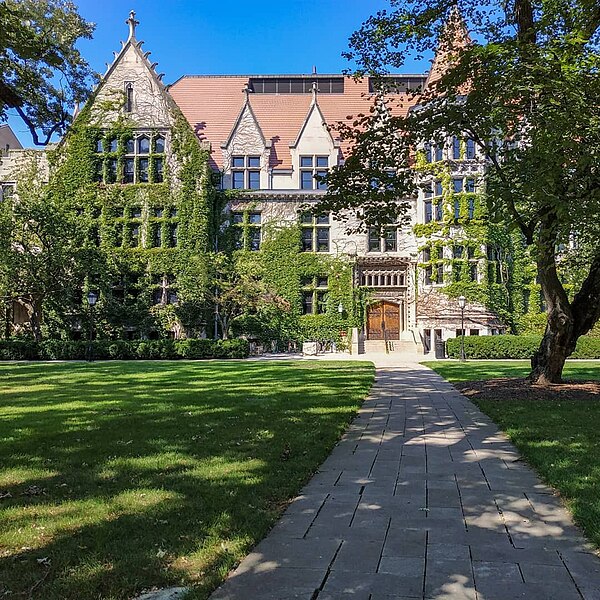Amos Alonzo Stagg Field is the name of two successive football fields for the University of Chicago. Beyond sports, the first Stagg Field (1893–1957), named for famed coach, Alonzo Stagg, is remembered for its role in a landmark scientific achievement of Enrico Fermi and the Metallurgical Laboratory during the Manhattan Project. The site of the first artificial nuclear chain reaction, which occurred within the field's west viewing-stands structure, received designation as a National Historic Landmark on February 18, 1965. On October 15, 1966, which is the day that the National Historic Preservation Act of 1966 was enacted creating the National Register of Historic Places, it was added to that as well. The site was named a Chicago Landmark on October 27, 1971.
Met Lab scientists Leó Szilárd (right) and Norman Hilberry under a plaque commemorating CP-1 on the West Stands of Old Stagg Field
Stagg Field in 2013
The University of Chicago is a private research university in Chicago, Illinois. The university has its main campus in Chicago's Hyde Park neighborhood.
Albert A. Michelson, Professor of Physics and first American Nobel laureate, delivers the second Convocation Address in front of Goodspeed and Gates-Blake Halls, with President William Rainey Harper, professors, and trustees in attendance, July 1, 1894.
View from the Midway Plaisance
The campus of the University of Chicago, from the top of Rockefeller Chapel, the Main Quadrangles can be seen on the left (West), the Institute for the Study of Ancient Cultures, West Asia & North Africa and the Becker Friedman Institute for Research in Economics can be seen in the center (North) and the Booth School of Business and Laboratory Schools can be seen on the right (East), as the panoramic is bounded on both sides by the Midway Plaisance (South).
View of university building from the Harper Quadrangle






